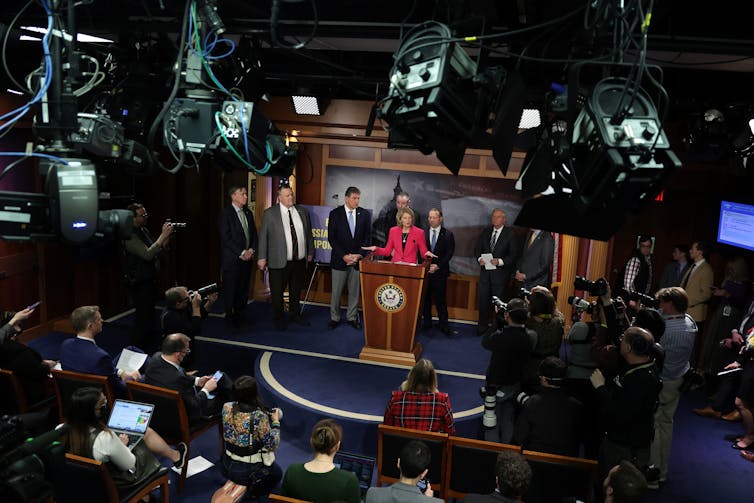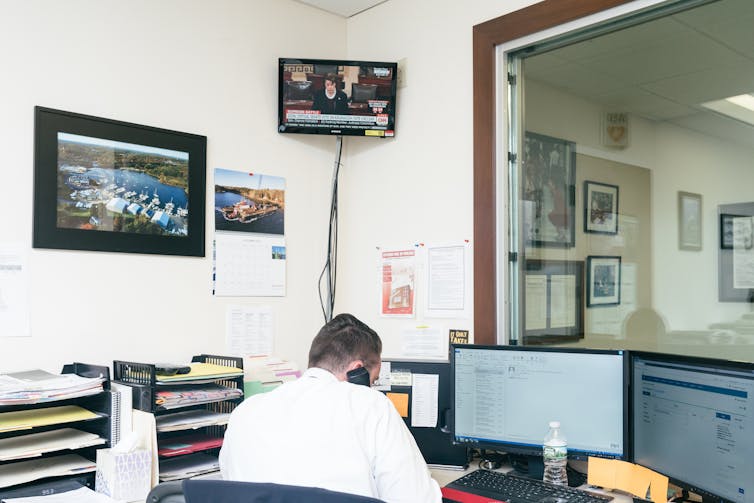Before you vote for a senator, here are some facts about what they actually do
Thirty-five Senate seats are up for grabs in the midterm elections. What tasks and responsibilities await the winners?

Fetterman or Oz? Walker or Warnock? Bolduc or Hassan? Kelly or Masters?
Hard-fought races for the U.S. Senate are dominating the news before the 2022 midterm elections, with energetic and close contests in Pennsylvania, Georgia, New Hampshire and Arizona, among others. Some have included record amounts of spending; others have featured seemingly endless amounts of spiteful attacks. Some have left voters wondering what policies the candidates want to pursue, or how issues will affect their daily lives.
There are 34 Senate seats up for grabs in regular races this midterm, plus one additional seat contested in a special election to replace the retiring Oklahoma Republican, Jim Inhofe.
U.S. senators serve 6-year terms, and around one-third of them are up for reelection every two years. It is a system that the Founding Fathers purposefully set up to ensure a degree of continuity and stability in Congress, while at the same time allowing for change on a regular basis.
Each state has two senators, and their elections are always staggered to avoid both being up for reelection at the same time.
As voters consider their choices, understanding the role and duties of a senator is important. What does a U.S. senator do once they are elected?
Their primary job is to serve their state’s interests in the national government. This can take a lot of different forms. As a political scientist, I think it is useful to break down the roles and responsibilities of a senator under four main headings.

1. Shape legislation
Senators take part in deliberations and voting within the Senate, with the goal of advancing the issues and positions that matter to their state. But they also serve to advance the interests of the country. Political scientists often refer to this as the “two congresses – every member is expected to serve distinct local interests while simultaneously, and collectively, representing the best interests of the nation as a whole. Those two roles can sometimes conflict when it comes to lawmaking.
There’s a lot of legislative work that needs to get done. The Senate divides it up by assigning specific issues to various committees, such as the Judiciary Committee or the Health, Education, Labor and Pensions (HELP) Committee.
Each senator serves on multiple committees and subcommittees to gather expert testimony on specific issues, oversee executive branch agencies and consider proposed legislation.
Each party elects leaders to facilitate decisions and advance the party’s policy objectives within the Senate. The Senate majority leader – that is, the elected leader of the majority party – has a lot of power to decide which bills will be brought to the floor for debate.
But every senator has substantial power to shape legislation.
In the House of Representatives, majority party leaders have firm control to determine what legislation is considered and what rules will be used to consider each bill, meaning they exercise power over both content and process. In comparison, Senate leaders have less control.
That’s because the Senate has the filibuster, a tool that permits any senator to effectively stall legislative action by taking the floor and talking for as long as they want to talk, subject to some important limitations.
Actual "talking filibusters” are rare these days, but a variety of delaying tactics within Senate procedures, such as something called the “hold,” allow each senator, regardless of party, to potentially stop consideration of a bill.
2. Represent constituents
Senators also serve their constituents – both those who voted for them and those who didn’t. They do this through their legislative activity – debate, voting and committee work – but they have other ways to act on constituents’ behalf.
Although they likely need to be in the Capitol when Congress is in session, most senators travel to their home state frequently. There, they hold town halls, meet with constituents, learn about how policies affect local communities and talk about the work they’re doing in Washington.
Each Senate office is staffed with people whose job is to do things like read constituent mail, listen to constituent concerns, schedule visits with the senator and work to untangle bureaucratic red tape to make constituents’ lives easier. Worried that your passport isn’t going to arrive in time? Call your senator’s office. You’re a disabled veteran who’s wondering what happened to that check to cover a new wheelchair? Send that email to your senator’s office.
The internet and social media have dramatically increased the public’s capacity to communicate with members of Congress, which makes tracking constituency opinion a daunting task.
Nonetheless, senators know that their ability to stay in office depends on the trust and goodwill they build with voters. They are constantly seeking information about the needs of their constituency.

3. Serve state interests
Because they represent an entire state, a senator must be familiar with an extensive array of “interests” – a broad term that covers public, business and industry concerns. These interests can be represented by well-organized groups of individuals or small businesses that contribute to the health and vitality of local communities. At other times it can be powerful corporations and industry associations.
For example, a senator from Texas cannot ignore the needs of oil companies in the state, or else they could face a backlash among a large number of voters who work for, or otherwise depend on, those oil companies. But at the same time, that senator must listen to the voices of farmers and ranchers, small-business owners, law enforcement officers, housing developers, homeowners, immigrant communities, health care providers and food service employees.
Americans tend to distrust special-interest groups that ask for specific policy changes. Part of the distrust is due to the role they play in elections. Powerful interest groups may endorse a preferred candidate in the hopes of advancing their legislative goals, give them money or spend it independently to help their campaign.
While interest groups can be influential in elections, they may also serve a much more benign role – providing insight and information that can help senators make good decisions in service to their constituents. This is why senators dedicate a chunk of their time to meeting representatives – and, yes, lobbyists – from these groups.
4. Prepare to run again
Finally, every senator must constantly prepare for the next election cycle. This means raising money, working with national party representatives and maintaining relationships with local political leaders.
As reelection nears, senators will dedicate substantial time and energy to the task of building and sustaining a campaign. Typically, raising money becomes a primary concern in the two years leading up to a election. And Senate campaigns can be expensive – in 2020, the average Senate campaign cost US$27 million.
Many tasks, one senator?
All of these tasks take a lot of time and energy, and Senate staff members are vitally important in executing the daily work of the senator. Staffers keep track of issues, communicate with constituents, manage constituent mail, schedule the senator’s time, contribute to committee work, prepare background material, write legislative speeches, coordinate with colleagues and interact with the media.

Today, Senate offices average about 40 people. Some staffers work in the Washington office of senators, while others work in state-based offices.
Managing a congressional office and members of the office staff itself takes a good deal of time.
A quick glance at the congressional calendar indicates that senators spend relatively few days “working” – that is to say, the days they are in Washington while the Senate is in session.
But that doesn’t mean they aren’t working in other ways. The various roles and responsibilities that a senator must perform means that many have a 60- to 70-hour work week, involving some very late nights. Still, with an annual salary of $174,000, they are at least well compensated.
Rachel Caufield does not work for, consult, own shares in or receive funding from any company or organization that would benefit from this article, and has disclosed no relevant affiliations beyond their academic appointment.
Read These Next
People are getting their news from AI – and it’s altering their views
Even when information is factually accurate, how it’s presented can introduce subtle biases. As large…
Autocracies in transition: In 2025, Cameroon and Tanzania rulers clung to power — but look more vuln
The countries, whose respective leaders recently won widely disputed elections, offer contrasting examples…
As millions of Americans face a steep rise in health insurance costs, lawmakers continue a century-l
US health care policy will remain fractured until lawmakers address the core question of who is responsible…






